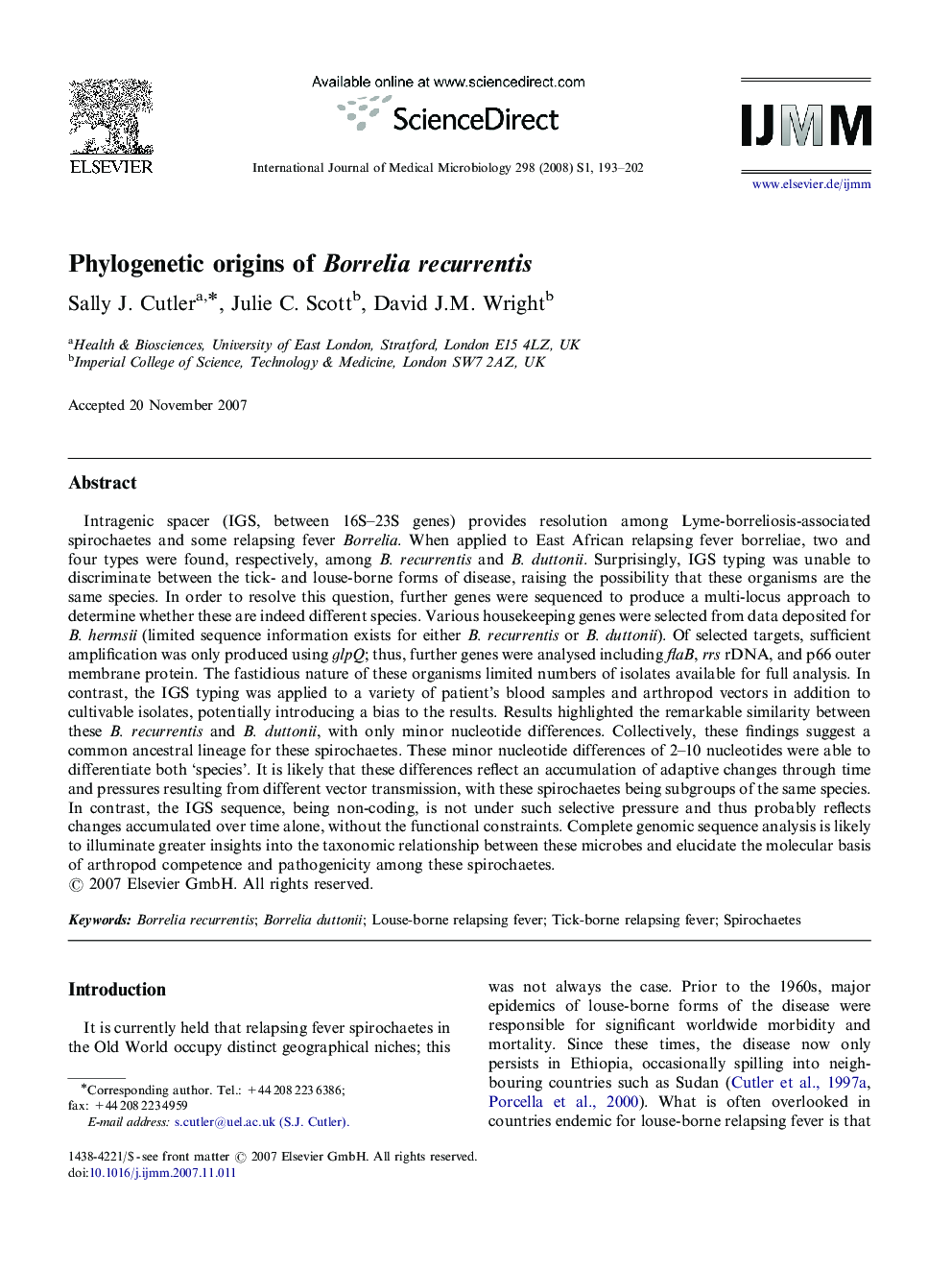| Article ID | Journal | Published Year | Pages | File Type |
|---|---|---|---|---|
| 2054970 | International Journal of Medical Microbiology | 2008 | 10 Pages |
Intragenic spacer (IGS, between 16S–23S genes) provides resolution among Lyme-borreliosis-associated spirochaetes and some relapsing fever Borrelia. When applied to East African relapsing fever borreliae, two and four types were found, respectively, among B. recurrentis and B. duttonii. Surprisingly, IGS typing was unable to discriminate between the tick- and louse-borne forms of disease, raising the possibility that these organisms are the same species. In order to resolve this question, further genes were sequenced to produce a multi-locus approach to determine whether these are indeed different species. Various housekeeping genes were selected from data deposited for B. hermsii (limited sequence information exists for either B. recurrentis or B. duttonii). Of selected targets, sufficient amplification was only produced using glpQ; thus, further genes were analysed including flaB, rrs rDNA, and p66 outer membrane protein. The fastidious nature of these organisms limited numbers of isolates available for full analysis. In contrast, the IGS typing was applied to a variety of patient's blood samples and arthropod vectors in addition to cultivable isolates, potentially introducing a bias to the results. Results highlighted the remarkable similarity between these B. recurrentis and B. duttonii, with only minor nucleotide differences. Collectively, these findings suggest a common ancestral lineage for these spirochaetes. These minor nucleotide differences of 2–10 nucleotides were able to differentiate both ‘species’. It is likely that these differences reflect an accumulation of adaptive changes through time and pressures resulting from different vector transmission, with these spirochaetes being subgroups of the same species. In contrast, the IGS sequence, being non-coding, is not under such selective pressure and thus probably reflects changes accumulated over time alone, without the functional constraints. Complete genomic sequence analysis is likely to illuminate greater insights into the taxonomic relationship between these microbes and elucidate the molecular basis of arthropod competence and pathogenicity among these spirochaetes.
